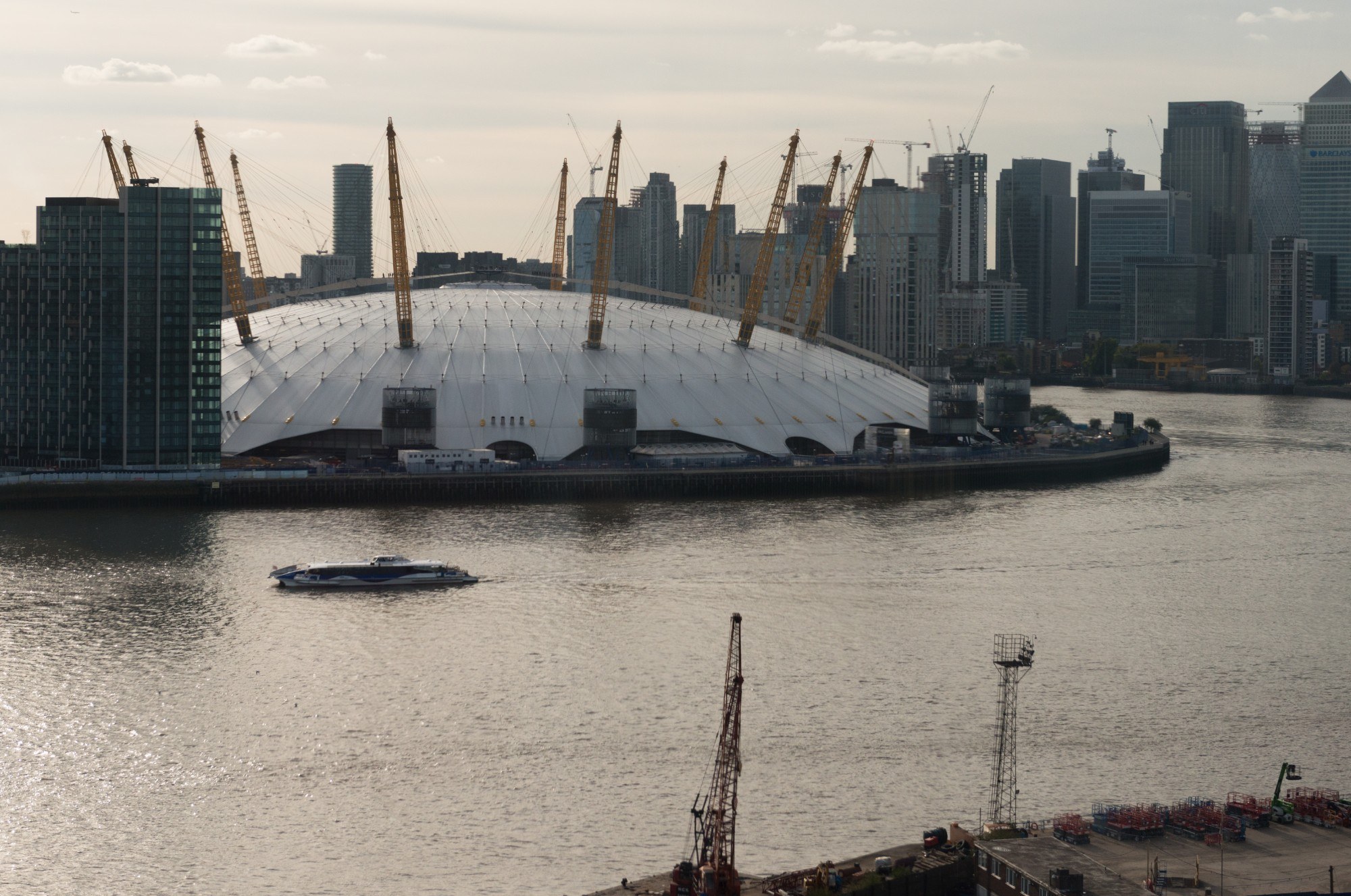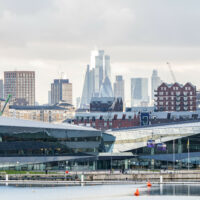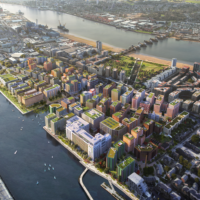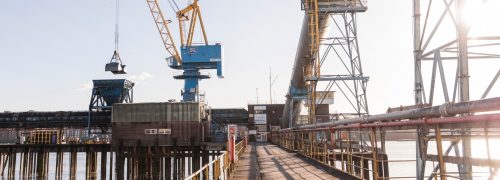
Regeneration news
The Royal Docks is at the heart of London’s river revival
The Thames is at the beginning of a renaissance. 20 million passengers are expected to travel along the Thames every year by 2035, an ambitious doubling of today’s number, as the river again becomes central to city life.
London’s waterway has always been a key part of the city’s identity, but it had become under-used for moving both passengers and freight. But this is all changing fast: significant investment is taking place in and around the Royal Docks, not just to use the river a lot more for sports and leisure, but to make it a practical and modern route for transport.
There’s a strong environmental argument for making better use of the Thames. Moving large vehicles off the roads – where they add to air pollution, road danger, noise and traffic congestion – is a question of sustainability. There’s plenty of space out on the river, and using that for freight will ease the pressure on a growing city.
The modern revival of the Thames as a freight corridor is a nod to London’s history. The Royal Docks is where goods from every corner of the world used to make their way into the capital on big ships. The operation was so massive that together the Royal Victoria, the Royal Albert and the King George Docks were once the largest enclosed docks in the world.
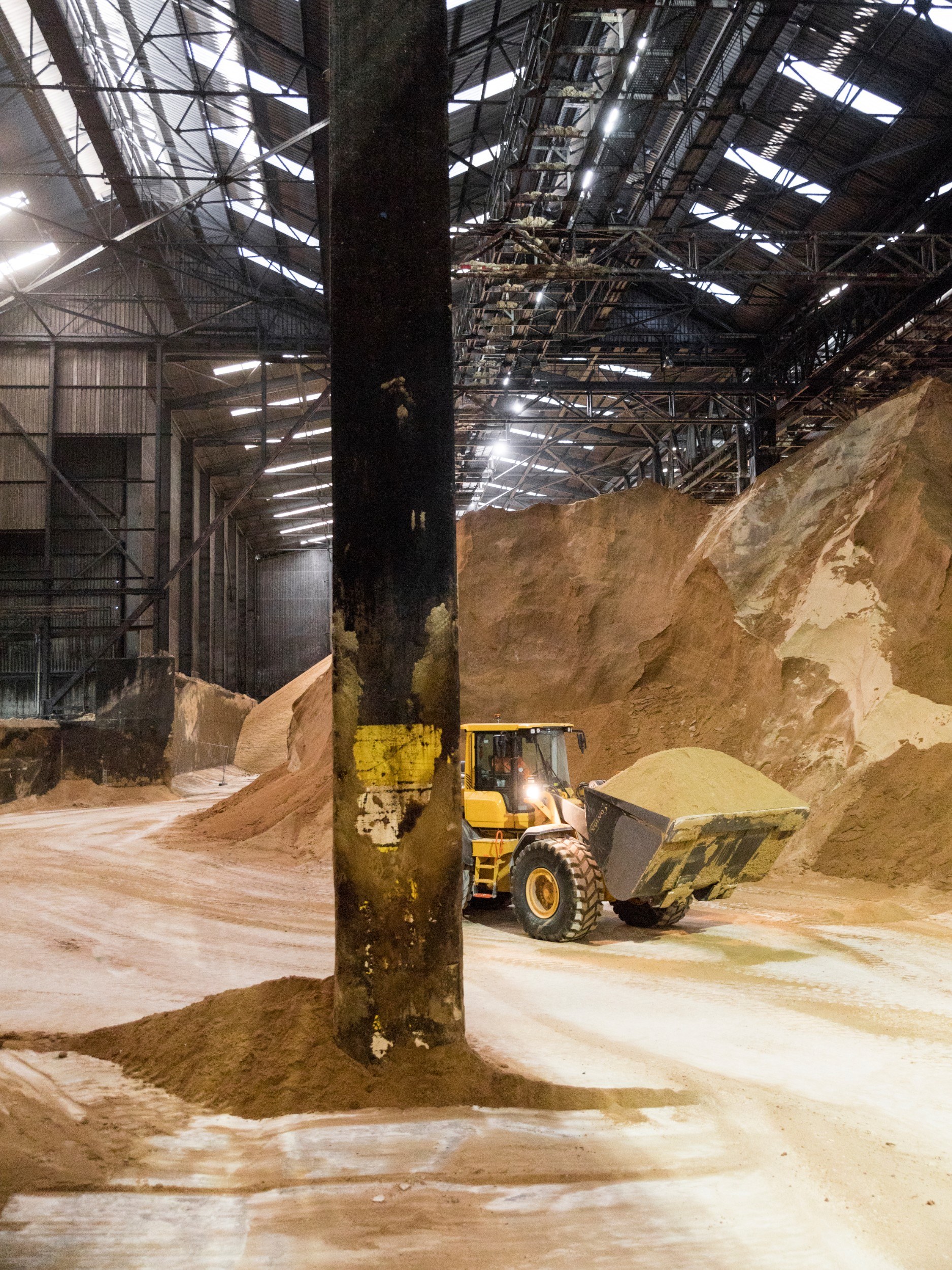
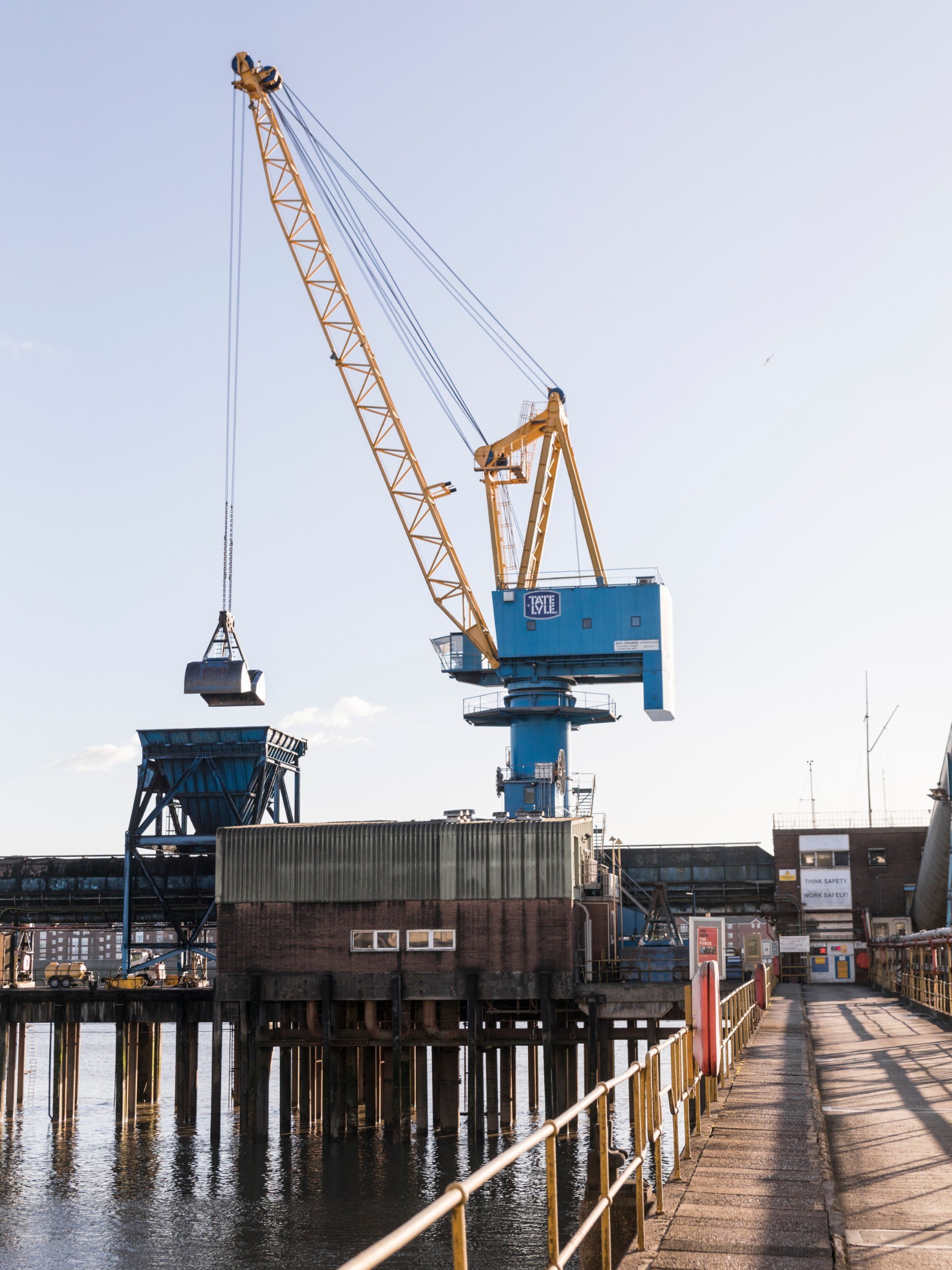
Tate & Lyle Sugars
Raw sugar is brought to the factory by boat, photographed by Sam Bush
Now, the Royal Docks is proud to be at the heart of plans to again make the river a key part of a well-functioning city. Of course, cargo has never stopped being handled by water in the area; take a walk down by the Tate & Lyle factory and if you’re lucky you’ll see raw sugar being funnelled off ships into the warehouses. But the nearby Peruvian Wharf was closed for 20 years before it opened back up as a functioning wharf last year with the capacity to handle 400,000 tonnes of cargo annually – that means 20,000 fewer lorries on London’s roads each year just from this wharf alone.
The restoration of Peruvian Wharf was no happy accident. It’s one of 50 wharves being safeguarded by the Greater London Authority to ensure they will still be used to handle cargo rather than being redeveloped. The reopening took place after a 17-year-long legal battle that ended when the Port of London Authority (PLA) bought and restored it. “It is great to see sites like Peruvian Wharf brought back into use and to recognise that traditional activities like moving cargo by river are as relevant as ever in our growing capital city,” Jules Pipe, London’s deputy mayor for planning and regeneration, said at the reopening. “This site now serves as an important part of a vital industrial area along the Royal Docks.”
Peruvian Wharf now serves as an important part of a vital industrial area along the Royal Docks.
Jules Pipe, London’s deputy mayor for planning and regeneration
Peruvian Wharf sits adjacent to another Royal Docks wharf bought by the PLA, Royal Primrose Wharf, and together the two wharves will be vital to handle the growing volume of cargo moving in and out of the area, including through the Tate & Lyle factory and the Tarmac concrete batching plant. Going forward, the Royal Docks wharves will handle increasing amounts of construction materials going into the area; considering how much building work will take place here in the years to come, taking some of this off the lorries and bringing it in by water will ease the disruption for everyone who lives and works here.
A vision for the Thames
The Thames Vision 2035 plan, which is supported by the Mayor of London, outlines ambitious goals to make better use of the river through all of London. In addition to doubling passenger numbers to 20 million by 2035, the Thames will also be used to transport over 4 million tonnes in inter-wharf freight (excluding activities down river) by the same year. At the moment, the river is used mostly to move things slowly and in bulk, but the river will be key to moving much of the materials that this growing city needs.
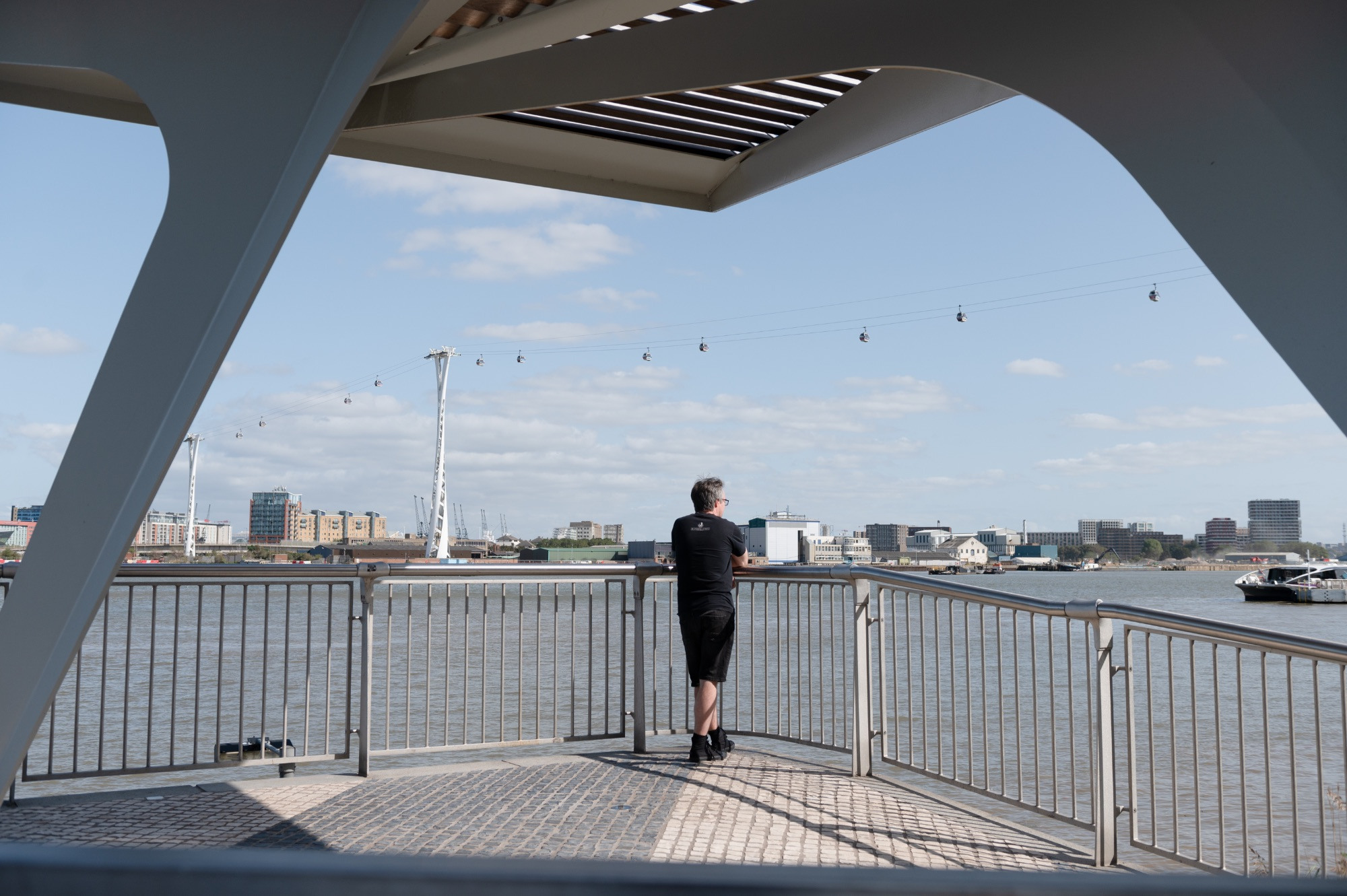
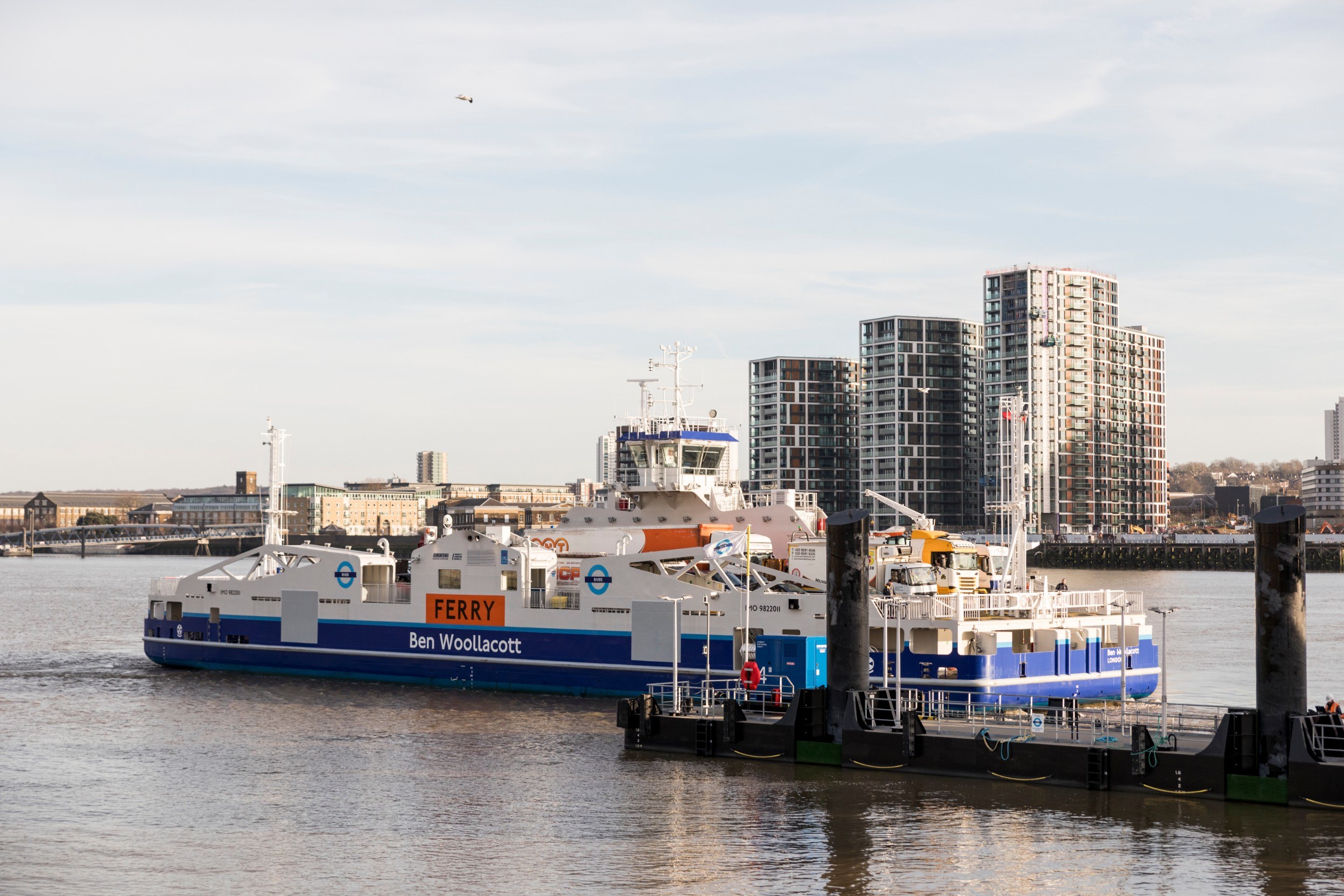
Travel by river
It’s not all about freight: the Woolwich Ferry and Uber Boat by Thames Clippers provide transport across and along the Thames. Photos by Tian Khee Siong and Sam Bush
Transport for London has recently upgraded the Woolwich Ferry to quieter, lower-emission hybrid vessels, providing increased capacity for crossings and specific facilities for cyclists. Courier company DHL is trialling a daily riverboat freight service for central London, using bicycles to bring parcels to their final destination. The DHL service is run by the logistics arm of what is now Uber Boat by Thames Clippers, launched last year after Thames Clipper paired up with Uber to run its passenger boats along the Thames. Royal Arsenal in Woolwich is where this water transport route begins, stopping at Royal Wharf by Lyle Park before taking the scenic route through the city. The new Royal Wharf Pier, which opened in late 2019, is a sight in its own as well, with its elegant timber battens and spacious views of the Thames.
Better access to the river as it flows past the Royal Docks, through improved signage, lighting and general polishing, isa key goal for the redevelopment. At the moment much of the riverfront is cut off from people with gates, unmarked slip roads, or a generally unwelcoming atmosphere. The upcoming regeneration of Albert Island is an exciting piece of the puzzle to restore the Royal Docks’ connection to the Thames. Plans for the £300m scheme, which were submitted at the beginning of 2020, includes a new boatyard – depending on where you draw London’s borders – will be the capital’s first new shipyard in 300 years. The Albert Island boatyard is intended to have capacity to accommodate Europe’s biggest ship lift, capable of lifting a Woolwich ferry out of the water, and a restored marina will have fully-serviced and functioning moorings.
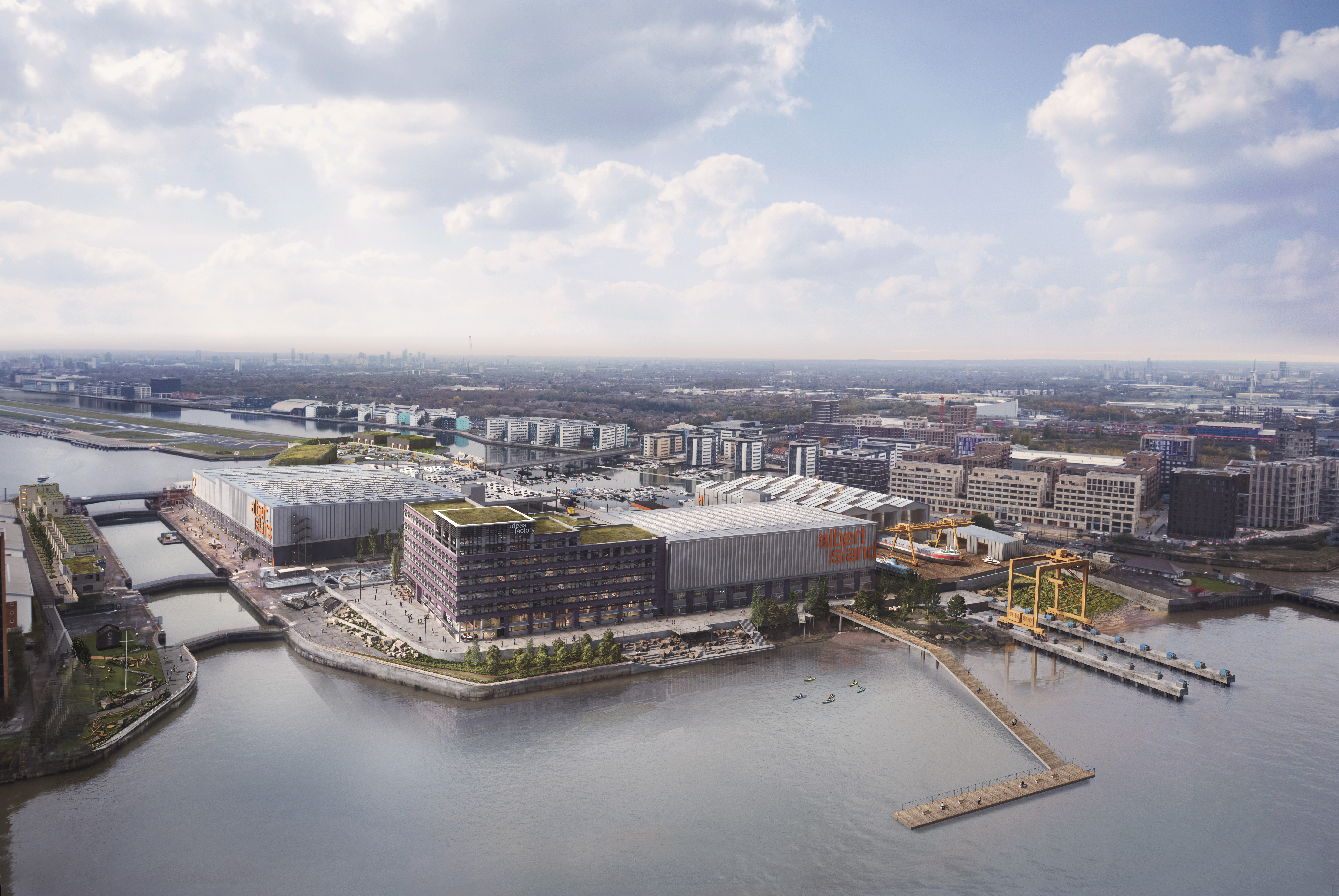
Albert Island plans
The designs pictured here include a new boatyard as well as a commercial, educational and innovation hub.
Eco-charity Thames21 also has exciting plans to establish more of a presence at the Royal Docks. The Thames Connections project aims to bring people closer to the river, especially those who might not have had the habit of doing so until now. Longer-term, Thames21 has aspirations to create a river centre on Albert Island, envisioned as an education space, as well as a place to cultivate aquatic plants and run water activities like paddleboarding and rowing. A key goal is to ensure people can benefit from the river as a source of health and wellbeing, and be something everyone in and around the Royal Docks can be part of.
As Londoners, we are proud of our river. In the future the Royal Docks will have better access to the water, whether that’s with refurbished piers, more frequent boat departures, or simply a sign showing where you can slip away from the main road to get a glimpse of the water. The Thames has huge potential to be a much better asset for London, and we are thrilled to be part of this by doing what we’ve always done so well in the Royal Docks: connecting the river to the city.
